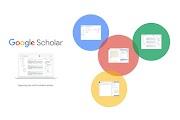Scholer
Google Scholar displays an extraordinary case among ASEBDs in that it is both one of the most every now and again utilized, yet likewise one of the least comprehended and approved. This is the reason we devoted specific exertion to repeating some substantial, stable technique to get a decent gauge of Google Scholar's size. We began from the technique of Orduña-Malea et al. (2015, p. 937) who gathered hit check information through crazy questions: "[… ]we ran test inquiries utilizing the accompanying language structure: <common_term - site:non-existent_site> The thought behind this is to inquiry the number of events of a typical term (prone to show up in practically all composed records), and to sift through its appearances in a non-existent site, which implies that we are verifiably choosing each current site. For instance: <a - site:ssstfsffsdfasdfsf.com>, or <1 - site:ssstfsffsdfasdfsf.com>. The explanation behind including a term before the "- site" direction is that this order doesn't take a shot at its own". In this investigation we tried the equivalent proposed question, "1 - site:ssstfsffsdfasdfsf.com" and adjusted the hunt string (distinctive "common_term" and diverse "non-existent_sites"), and the time span (diverse time ranges) as per our characterized test search strings (see "Reference section 2").
Believability evaluation
Through fluctuating questions iteratively, we got distinctive QHC size estimations for each inquiry. We took the greatest QHC esteem as the best gauge of the all out number of a database's records. So as to approve the QHCs acquired we performed two credibility checks with our information. To begin with, we gathered authority size proclamations gave by the ASEBD administrators themselves. Second, other research studies may have recently analyzed ASEBD sizes utilizing comparable or various strategies to our own. We contrasted the greatest QHCs and the size data of the ASEBDs themselves or of research directed on the size of the ASEBD. The credibility check was direct for generally ASEBDs. At the point when our most extreme QHC was inside the conceivable scope of these near numbers we considered the QHC conceivable. Conceivable range was principally controlled by considering the time contrast in size data. For membership-based ASEBDs that give access to different unmistakable bibliographic databases (i.e., EbscoHost, ProQuest, Web of Science) we additionally recovered QHC information for a particular database where near size data was accessible from legitimate sources. Along these lines, we could evaluate if and to what degree QHC information coordinated the official size articulation of the supplier. In the event that the QHC was conceivable for a solitary database, we contemplated QHCs would likewise be also conceivable for numerous databases.
Believability evaluation
Through fluctuating questions iteratively, we got distinctive QHC size estimations for each inquiry. We took the greatest QHC esteem as the best gauge of the all out number of a database's records. So as to approve the QHCs acquired we performed two credibility checks with our information. To begin with, we gathered authority size proclamations gave by the ASEBD administrators themselves. Second, other research studies may have recently analyzed ASEBD sizes utilizing comparable or various strategies to our own. We contrasted the greatest QHCs and the size data of the ASEBDs themselves or of research directed on the size of the ASEBD. The credibility check was direct for generally ASEBDs. At the point when our most extreme QHC was inside the conceivable scope of these near numbers we considered the QHC conceivable. Conceivable range was principally controlled by considering the time contrast in size data. For membership-based ASEBDs that give access to different unmistakable bibliographic databases (i.e., EbscoHost, ProQuest, Web of Science) we additionally recovered QHC information for a particular database where near size data was accessible from legitimate sources. Along these lines, we could evaluate if and to what degree QHC information coordinated the official size articulation of the supplier. In the event that the QHC was conceivable for a solitary database, we contemplated QHCs would likewise be also conceivable for numerous databases.





0 Comments